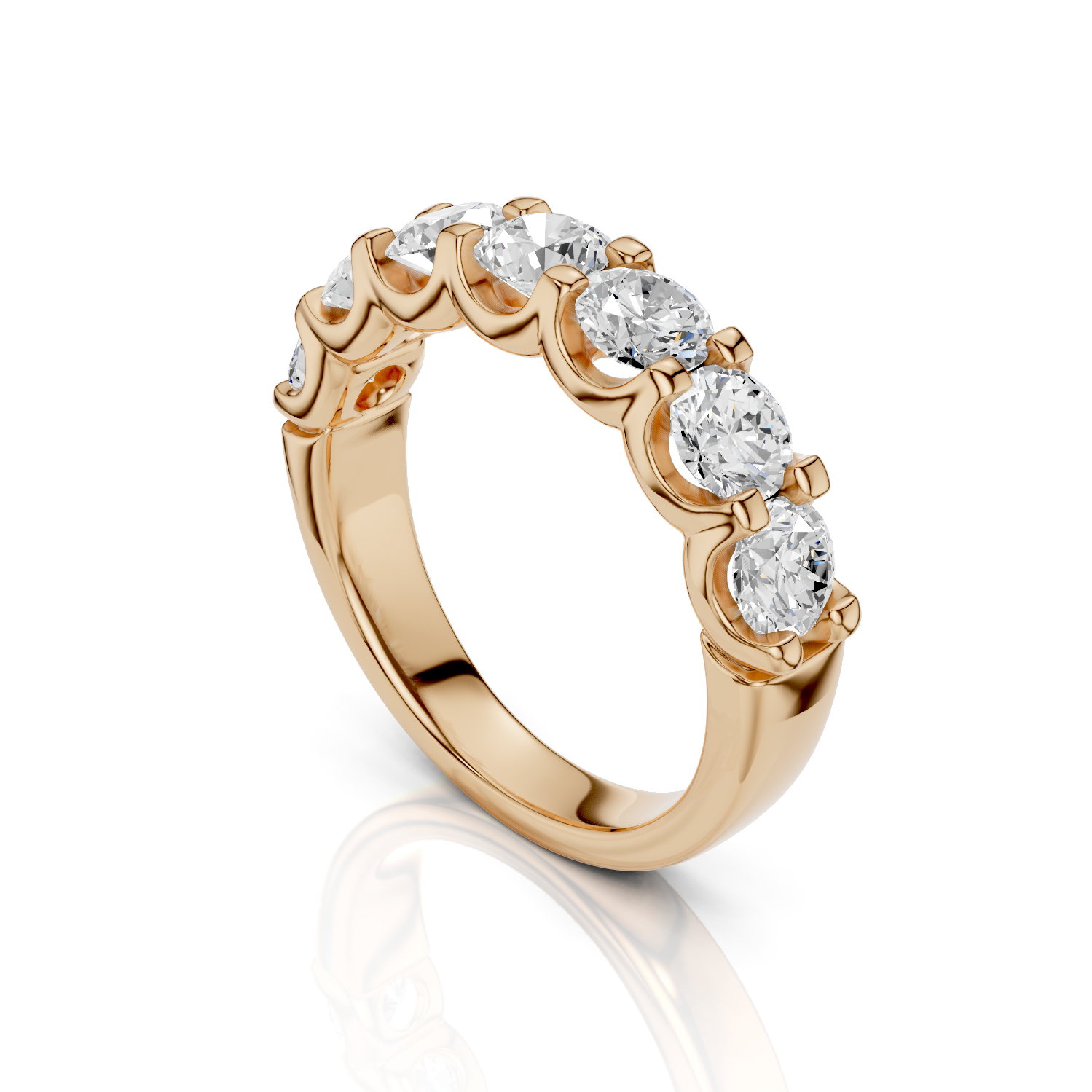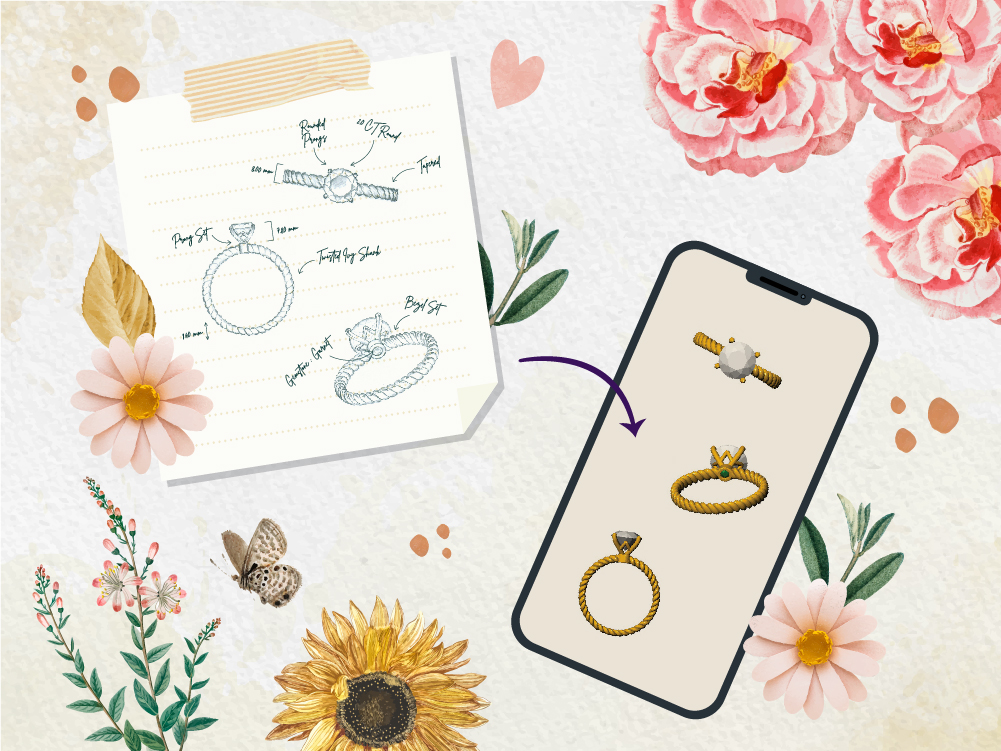
Jewelry is more than just an accessory; it’s a reflection of art, tradition, and individuality. Behind every beautiful piece of jewelry lies a meticulous process that transforms a mere idea into a tangible masterpiece. The journey from sketch to reality in jewelry product development is a fascinating and intricate process that combines creativity, craftsmanship, and cutting-edge technology. In this article, we will walk through the full development cycle, highlighting the key stages from concept sketches to 3D rendering and finally, the production of a stunning piece of jewelry.
Every great piece of jewelry starts with an idea. Whether it’s an engagement ring, a necklace, or a pair of earrings, the design process begins with a concept. This concept often originates from inspiration drawn from various sources—nature, architecture, culture, or even the client’s personal preferences.
At this stage, the jewelry designer collaborates closely with the client to understand their vision. Mood boards, reference images, and discussions about the style, gemstones, and metals help in narrowing down the ideas. Once the vision is clear, it’s time to move on to the first tangible step: sketching.
Once the concept is outlined, the designer translates it into sketches. This is where creativity comes into play, as designers experiment with different shapes, angles, and aesthetics. The sketch acts as a blueprint for the final product, allowing both the client and the designer to visualize the concept.
Hand-drawn sketches can be as simple or as detailed as necessary. Some designers might create multiple versions to showcase how the piece will look from different perspectives. In this stage, the designer also determines the placement of gemstones, the type of metal to be used, and other intricate details that will bring the piece to life.
After the initial sketch is approved, the design is translated into a Computer-Aided Design (CAD) model. CAD software allows the designer to create a highly accurate 3D representation of the jewelry piece. This step is crucial as it offers a level of precision that is impossible to achieve through hand-drawing alone.
Using CAD, the designer can rotate the model, zoom in on details, and even simulate how the piece will look with different gemstones or metals. The client can see the exact proportions, sizes, and aesthetic of the final product before any physical production begins. This reduces the chances of errors or miscommunication and ensures that the piece is perfectly aligned with the client’s vision.
With the CAD model ready, the next step is 3D rendering. Jewelry rendering is the process of creating photorealistic images of the piece, allowing both the designer and the client to visualize the final product in detail. Renderings show the texture, light reflection, and color of the metals and gemstones as they would appear in real life.
This stage is particularly important for online jewelry stores or businesses showcasing their products in a digital environment. By providing high-quality 3D renders, jewelry designers can offer a realistic preview of the final product, enhancing the customer’s buying experience. Renderings help the client make informed decisions before moving to the next stage—manufacturing.

Before mass production or crafting the final piece, a prototype or wax model is created. This prototype serves as a physical representation of the design and allows the designer to identify any last-minute adjustments. In the case of custom or one-of-a-kind jewelry pieces, the prototype helps the client physically experience the scale, shape, and comfort of the piece.
For more intricate designs, jewelers often use a process called “lost wax casting,” where the wax model is used to create a mold for the final product. Prototyping provides an added layer of precision, ensuring that the finished piece meets all expectations.
Once the prototype is approved, the final production begins. The casting process involves melting the chosen metal (gold, platinum, silver, etc.) and pouring it into a mold that has been created from the wax model. This step turns the conceptualized design into a tangible piece of jewelry.
After casting, the raw metal form is cleaned, polished, and checked for any imperfections. At this stage, jewelers also engrave intricate patterns or designs if needed, ensuring that every detail matches the original vision.
After the base of the jewelry piece is created, gemstones or diamonds are carefully set into place. Stone setting is an art in itself, requiring skilled craftsmanship to ensure that the stones are secure and properly aligned. The setting style can vary depending on the design—prong, bezel, pave, or channel settings are commonly used.
Each gemstone is placed with precision to enhance the overall look and feel of the jewelry piece. At this stage, attention to detail is crucial to ensure that the stones are not only visually appealing but also durable and securely placed for long-term wear.
The final step in the jewelry product development process is polishing and finishing. The piece is polished to give it a smooth, shiny surface, and any remaining rough edges are smoothed out. For some designs, additional finishing techniques like texturing, matte finishing, or engraving may be applied to enhance the visual appeal.
Once polished, the jewelry undergoes a final inspection to ensure that it meets quality standards and aligns with the client’s vision. After passing inspection, the piece is ready for delivery or display.
The journey from sketch to reality is a harmonious blend of creativity, technology, and craftsmanship. Whether it’s a custom engagement ring or a unique necklace, each piece of jewelry goes through an intricate process that ensures every detail is perfect. From concept sketches to 3D rendering and final production, the jewelry product development cycle transforms ideas into stunning, wearable art.
For jewelry shops looking to offer personalized designs or showcase their exclusive collections, understanding this process can help you deliver top-tier products to your customers, ensuring satisfaction and repeat business.